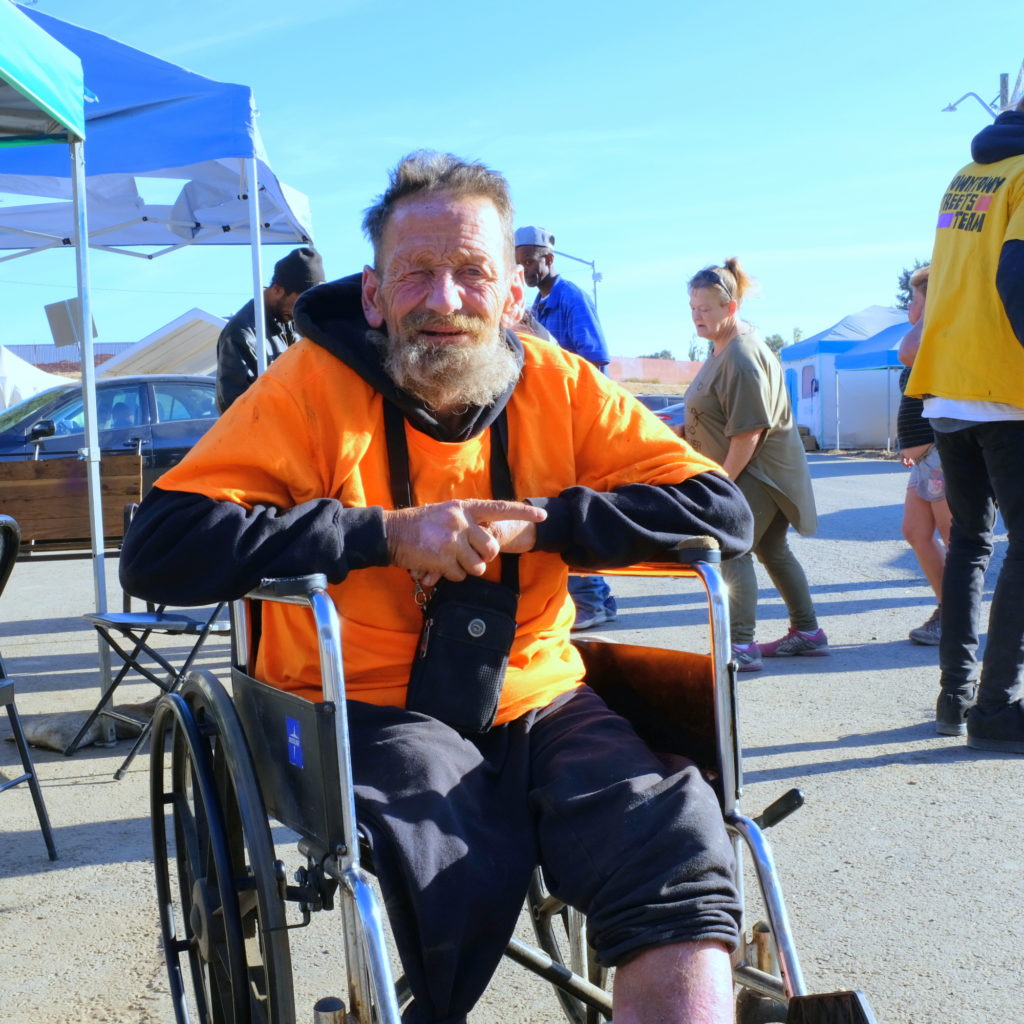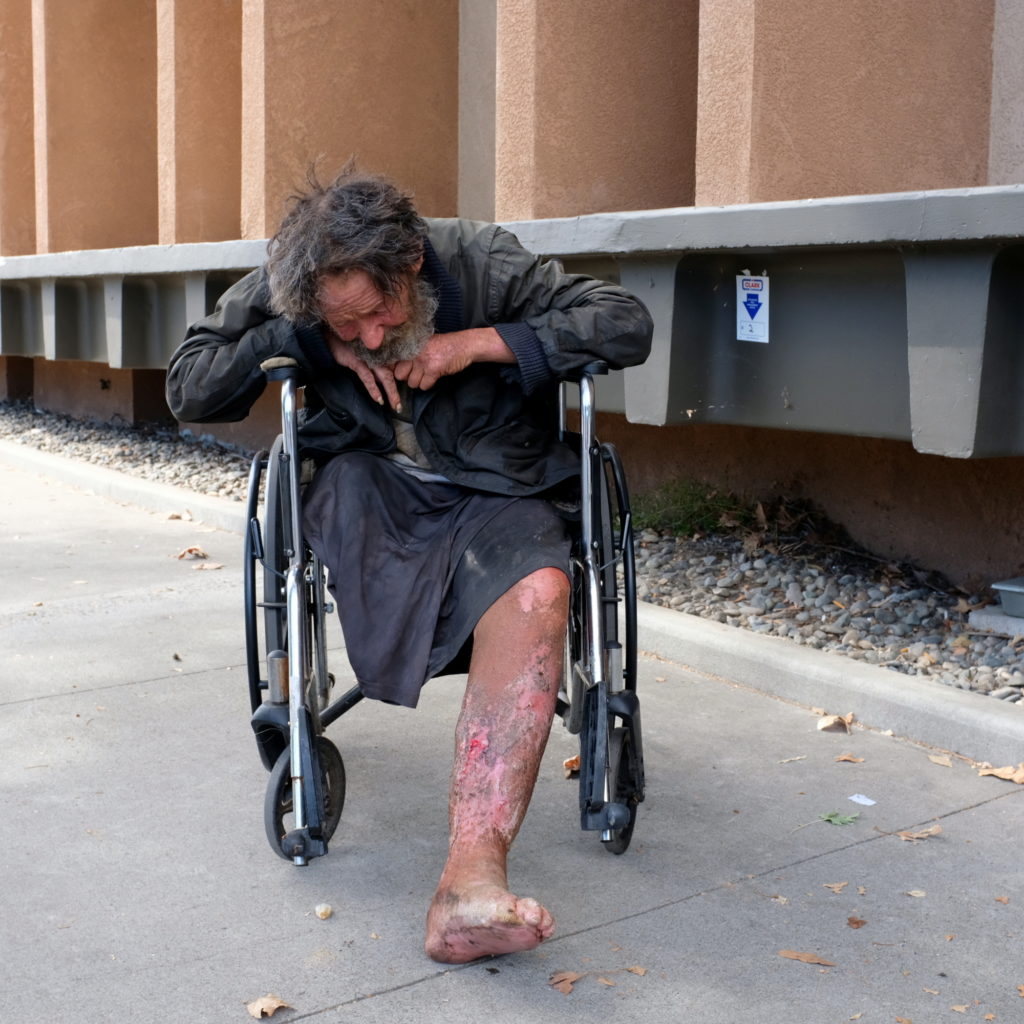Alan Davis, the homeless man who was taken to the Modesto Outdoor Emergency Shelter (MOES) in late September is back on the streets. Davis had spent a little over two months at MOES and seemed to be doing well when he was moved to the new shelter in the Salvation Army’s Berberian building on 9th and D Streets. Prior to arriving at MOES, Davis had spent many months haunting the streets and sidewalks of downtown Modesto, where he was well known to many local businesspeople and passers-by.
Davis was given a priority position at the new shelter because he’s disabled and confined to a wheelchair. But even cold and stormy weather didn’t discourage him from bolting for the streets almost as soon as he was inside.
Davis reportedly said, “These bathrooms aren’t for me,” when asked why he was leaving. It was an odd answer. Davis had been using Porta-Potties at MOES, and the new shelter has excellent handicap-accessible facilities.

For those experienced at working with homeless people, Davis’s sudden exit is no surprise. A great many people who’ve spent years on the streets panic when suddenly put indoors. In some cases, the cause might be an onslaught of claustrophobia. Many homeless people are also uncomfortable in close quarters with others.
Frank Ploof, the city’s homeless coordinator at MOES, worked closely with Davis over the last two months. Ploof was able to get Davis enough identification to get his disability payments reinstated and a payee assigned.
In what may have been a telling incident, Davis just recently refused Ploof’s offer to get a mental health evaluation. It was the only time he’d refused an appointment since he’d been at MOES.
Privacy rights and regulations make it almost impossible for anyone but law enforcement or qualified medical personnel to learn a homeless person’s medical history, but there are suggestions in his records that Davis may have at one time been diagnosed with a serious mental illness. If that’s the case, he’s yet another of the hundreds of mentally ill local homeless people who, “don’t want help.”

And that’s what Davis said he told Randy Limburg when he found Davis in his wheelchair near the Gallo Theater for the Arts in downtown Modesto last Wednesday. An outreach worker for Telecare, Limburg has years of experience dealing with the mentally ill, but he’s bound by the same regulations that tie the hands of social workers everywhere.
If a person rejects help, no matter how ill, no one can force that person to accept assistance. The exceptions are when a person poses an imminent danger to him- or herself, or to others.
Despite ample documentation for the frequent occurrence of anosognosia, a condition that leads the mentally ill to believe they’re perfectly well, current regulations require even seriously mentally ill people be left on the streets if they refuse help. It is this rule as much as anything else that leads so many people to believe homeless people “choose” homelessness.

Alan Davis did well at MOES, where he had a tent and a bed. He spent most of his time outside his tent in warm, donated clothing. He had access to Dean Joseph Dodd’s Cleansing Hope Shower Shuttle and clearly enjoyed his showers. People watched out for him and made sure he had adequate food and water. His one leg was routinely inspected, cleaned and wrapped; it had been infected when he first came to MOES.
Davis’s tent was taken down as soon as he was moved to the new shelter. With MOES closing down, Davis now has nowhere to go other than the shelter he’s already rejected. Many will say he’s chosen to be homeless. Others will wonder why we continue to treat homelessness with obsolete methods and inadequate services.

Good article. One word I would edit is in the last sentence, and that is to use “mental illness” rather than “homelessness.”